The tool cabinet is really three big boxes, one being the main box of 48″x42″x14″, and the two outer hinged boxes are each 48″x20-1/2″ x 4″. I built the big box first and outsmarted myself some, a lesson I learned in time to change the way I built the two door boxes.
Beginning with four pieces of 48″x24″x3/4″ Baltic birch-ish plywood panels from the big box store, I ripped them all to 14″ wide and sawed rebates on the back edges to accept the 1/2″ back panel. I ripped a fifth 3/4″ panel to be 1/2″ narrower than the outer box elements in order to allow for the 1/2″ back panel since it serves as the center stile.

It was at this point when I outsmarted myself and wasted a lot of time to no great purpose when I decided to miter the corners. This was simply unnecessary and a step I avoided when building the matched door boxes. Given the set-up of my shop the only way I could cut miters on the ends of the box panels was to use my battery-powered circular saw, which is an excellent tool that works just fine. The time sink was in getting the 45-degree cut just right in order to accomplish the 90-degree corner. After some test cuts I got it right and had the four outer panels ready for assembly.
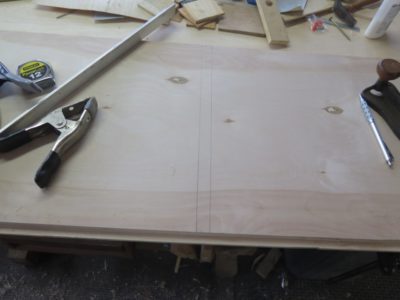
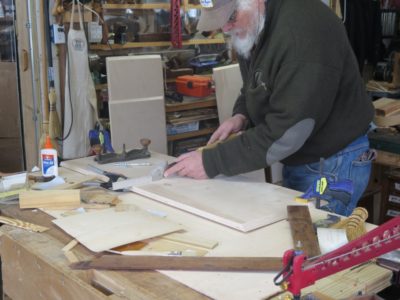
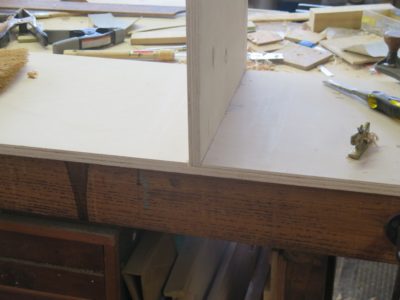
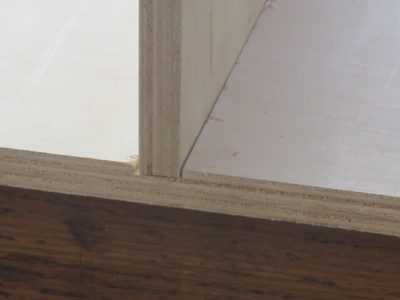
Once that was done I cut the dadoes in the top and bottom panels to receive the interior center vertical panel, cutting the shoulders with a Japanese saw, excavating with a router plane then finishing it off with a small dado plane.


I assembled the back panel from two pieces of 48″x24″x1/2″ plywood, using PVA adhesive and pinch dogs to hold the together while the adhesive sets. Pinch dogs are one of the treasures I discovered in the pattern shop, along with using nails and screws for clamping stacked elements together for painted curvilinear structures. In this case it’s not painted stack laminations, but the surfaces will be obscured entirely by veneerwork.



With all that complete the entire structure was assembled using PVA adhesive (I cannot assure that the tool cabinet will always be in the best atmospheric environment) and deck screws. I chuckle with the gasping and pearl clutching I am sensing out in the fruited plain. I augmented the corners with full-length mitered glue bocks using nails and PVA.
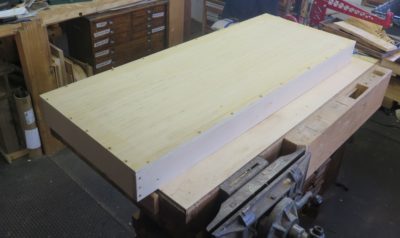
I learned my lesson with the bog box so I assembled the doors with butt joints and glued-and-screwed.
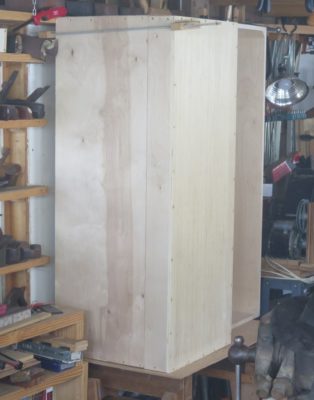
Whew, all the pieces fit together. The thing is so big I shoulda called it “the tool closet.”
When it comes to large scale furniture making, or at least when there are large expanses of flat elements such as sides, doors and backs of larger cabinetry, one of the constant challenges to makers is adapting to the movement of wood through the seasons by means of various assemblages. Long ago I developed the attitude it would be more efficient and more successful to use wood re-formatted to simply not move in response to environmental moisture. In other words, to use good quality plywood. That might make me a heretic in the fine woodworking world, and I will give that accusation all the consideration it deserves.
Okay, I am done with that consideration. As pundit Mollie Hemingway once remarked, “My spiritual gift is not caring what you think about anything.” That pretty much summarizes my attitude towards plywood as a legitimate fine construction material.
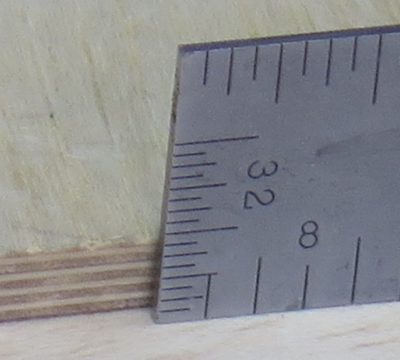
Frankly it is not a concern for most of my projects given the scale of my work. That said I have begun experimenting with home-made plywood even for some of my smaller work, consuming my copious inventory of veneers and marine epoxy to make nearly indestructible plywood like this. I will be blogging about this undertaking in the near future.
Sure, I know how to make frame-and-panel furniture and use it when it is stylistically appropriate, but otherwise I move on using good plywood for the panels of my projects. This becomes even more imperative for me when the ultimate purpose of the project is to express the decorative surface, either marquetry or japanning/fauxrushi. I just want the seasons to unfold with the carcass substrate not even noticing.

Over my 50 years of restoring and conserving ancient furniture I have seen far too many instances of a solid wood carcasses tearing apart the decorative surface to go down that road in my own work, as in this 19th Century French desk. Given the prominence of decorative veneerwork on my cabinet this phenomenon was one I did not seek to replicate.
This brings me to the construction choices for my tool cabinet, in some ways to be the culmination of my “making” undertakings. In point of fact this will be a huge (for me) simple box measuring roughly 48″ high x 42″ wide x 15″ deep. The cabinet has two purposes; 1) to hold as many woodworking tools as I can possibly cram in there on 12 (!) swinging panels, and 2) express the aesthetic of traditional Roubo/Roentgen parquetry (outside) combined with HO Studley’s inspirational aesthetic (inside). For this reason, I need a structure that is both robust and exceedingly stable if I want the cabinet to redound to my descendants. This pretty much means that I build the box and its doors out of Baltic birch plywood, for the most part 3/4″.
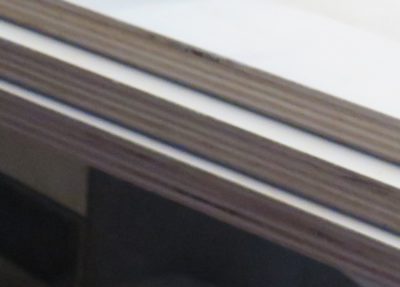
When you merge that preference with the additional facts that I am not set up to do large scale millwork combined with the ready availability of 24″ x 48″ “project panels” at the Big Blue Box store, my path forward was pretty self-evident.
Now the only real question is, “How many months with this adventure consume?”
Stay tuned to find out.
Sorry, I accidentally posted this headline last week with no content. Here is the content.
I find everything about the Gragg Chair to be compelling, from its aesthetic sinuous elegance and innovative form to the engineering brilliance and the craft challenge itself. But, could the same form and concepts be taken to different places? What else could be accomplished in the territory of Graggsylvania?
I intend to find out.
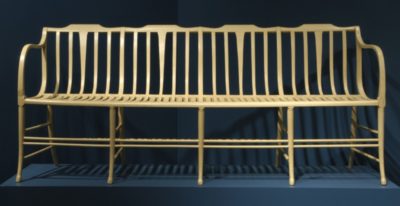
I am not the first person to ponder an exploration down this path, beginning with Samuel Gragg himself, who constructed this unsuccessful (to me eye, at least) settee. I fully intend to make a four-unit settee employing the fully steam bent structural integers rather that the partial one he employed. Actually, that might be a post-winter project as I would have to do it on the unheated fourth floor which I promise you is not someplace to be desired as a workspace once the chills set in, although that might just work for steam bending the parts. If I can clear space in my heated studio, however…
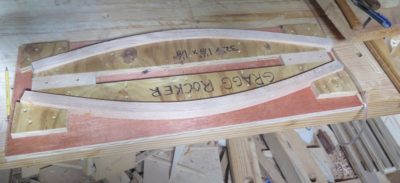
And how about a Gragg Rocker? I’ve mocked one up and have bent the rockers for it, now it only takes time and energy.
What’s next, Gragg porch chairs? Gragg footstools? Gragg plant stands? Gragg child’s chair (now that is really intriguing)? The options boggle the mind and fuel the imagination.
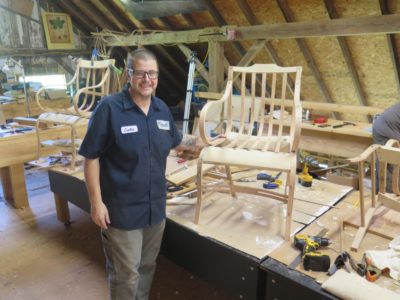
Our final day of the workshop opened with our recognition that no one would be 100% completed with the chair construction, but everyone was close with the demonstrations of the last tasks to be completed.
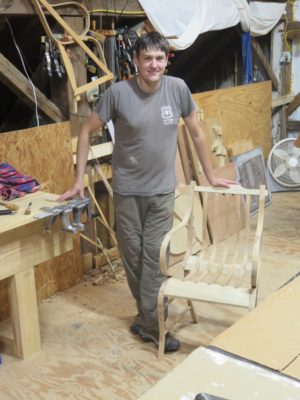
This list included adding the front stretcher and rear rungs along with all the intermediate seat slats, insertion of four triangular glue blocks associated with the arms, followed by all the sculpting required after all the construction is finished and glued up.
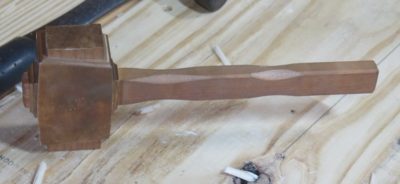
I forgot to mention earlier that one of the fellows brought a nicely finished Studelyesque mallet, based on the castings by Bill Martley that I blogged about earlier. The mallet came in handy a great many times.
It was a great week of fellowship, comradery and loads of creative work. Throughout the six days we jointly noted a number of places in the syllabus where en toto a few hours could probably be shaved off the schedule. So if there is interest I would be glad to offer the workshop again, but even better.
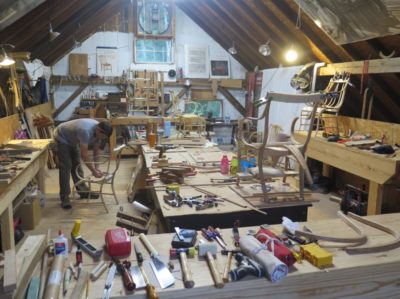
With the incorporation of the continuous seat/back slats the artifacts began to adopt the true character of a Gragg chair.
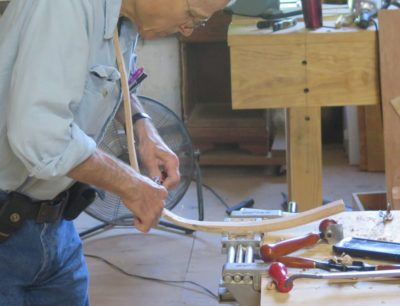
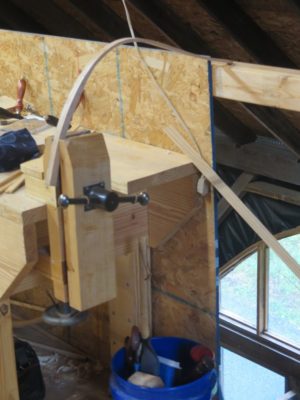
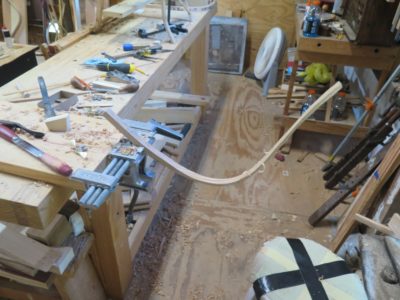
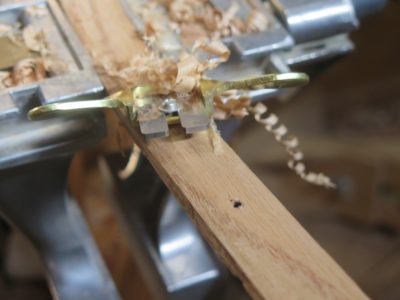
There’s not really a lot to say about the process; you thin the vertical sections to impart the requisite springiness (this is where clamping/vise weirdness is a feature, not a bug), mark, cut and excavate the dado troughs in the rear seat rail, and lay out the half-blind dovetails on the front set rail and the mortises in the crest rail. It sounds so mundane to describe many hours of intense work thusly.
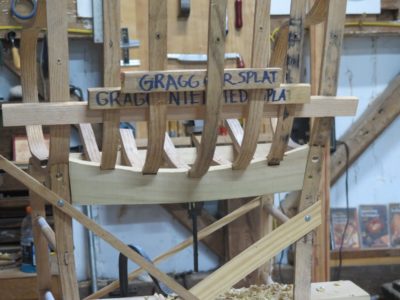
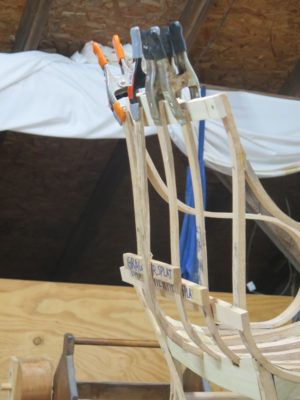
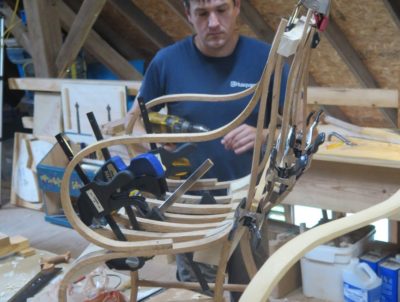
One “complication” is that the slats must be off-set front-to-back so that they are staggered in order to impart the “elastic” leaf spring function to the chair as a whole. The is accomplished by using spacers between the slats just above the rear seat rail. Only after this configuration is achieved can the half-blind dovetails in the front seat rail be layed out and cut.
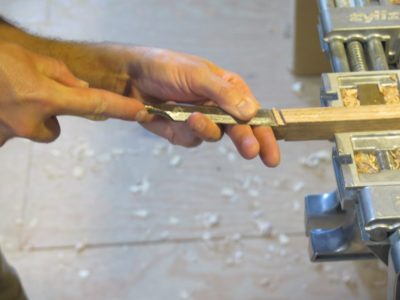

The dovetails themselves are a piece of cake, literally a minute or two per joint. The pocket mortises chopped into the rear edge of the front seat rail are a bit more involved but still not hysterically complex.

Once this is done the tops of the slats can be marked and the tenons cut.
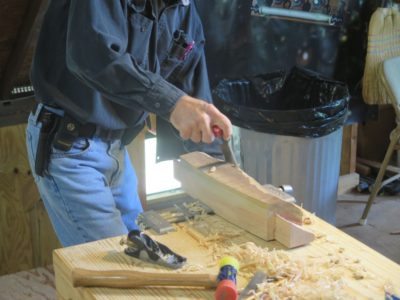
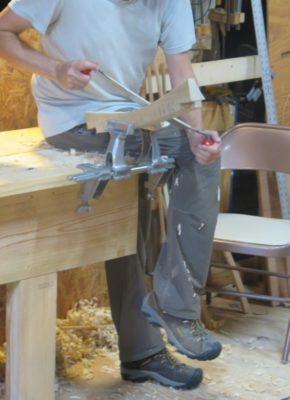
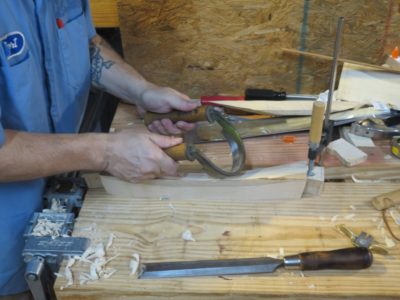
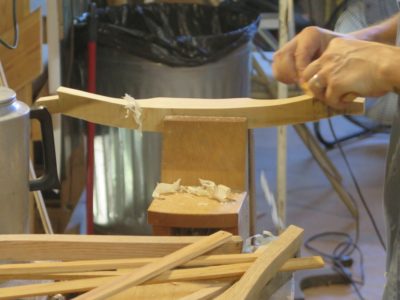
Fitting and shaping the cross-chair elements is at the heart of turning this pile of parts into a structural construct capable of supporting a sitting body. This takes a lot of time.
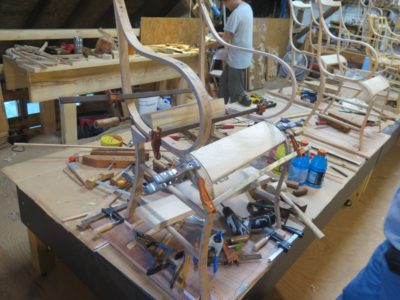
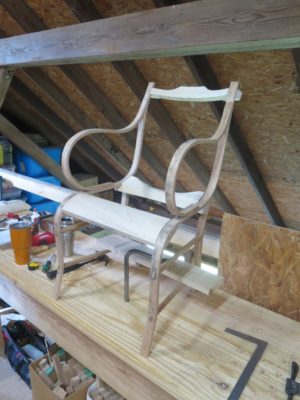
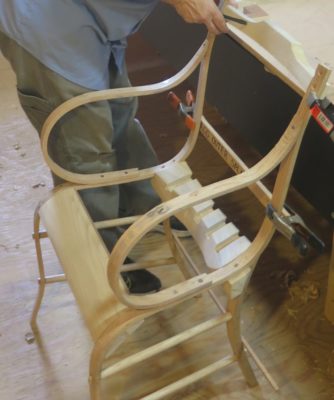
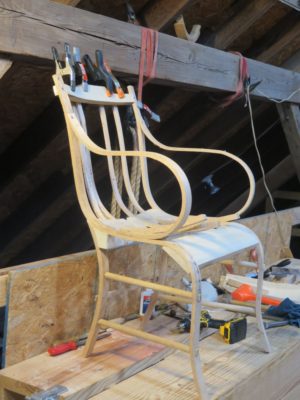
As the cross-chair structural elements were added and shaped it was time to move on to the work of shaping and thinning the continuous seat/back slats. My experience has been that these must be bent full thickness over the whole length, then the section beginning with and above the rear seat rail must be thinned by hand, usually with spokeshaves or drawknives to the point where they are appropriately springy. Concurrent with this step is cutting the dado troughs for the slats in the rear seat rail and there is a fair bit of back and forth getting them to fit properly and be properly springy so that it can all go together in the end.
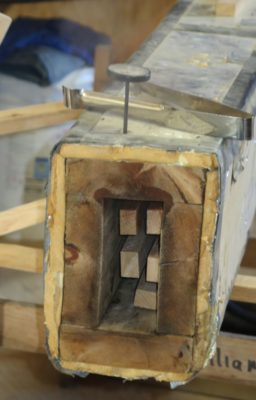

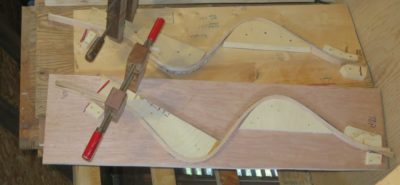
Since one of the students had very limited experience with steam bending I loaded up the steam box with chair parts and went through the entire process with him so that he could get the “feel” of how each of the parts was cooked and formed.
By Day 3 we were deep into the woods of Fussyville as curved and tapered parts had to be individually fitted to each other. There was no straightforward way to do this, you just gotta nibble away and sneak up on it.
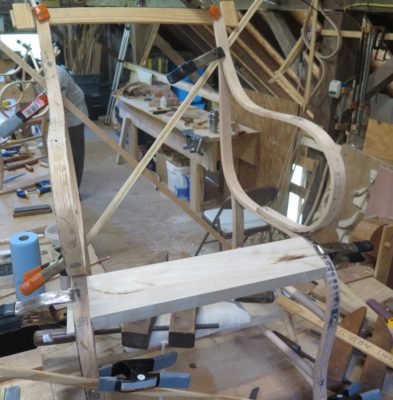
With the front seat rail being the easiest cross chair element to fabricate and fit, it was time to move on to the rear seat ail and the crest rail. One of these is simple, straightforward and only takes a short time to get roughed and begin the shaping. The other is a complete pain in the kiester. These can be addressed in whatever order you choose, and in fact the students chose different orders.
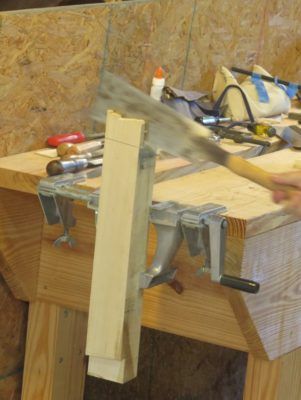
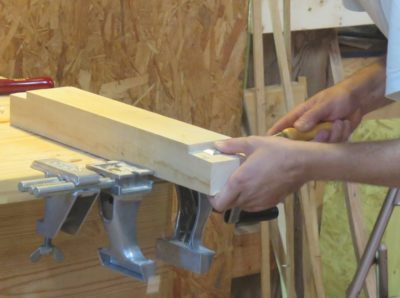

The easier one is the crest rail, which like the front seat rail is a glorified rabbet/lap joint for an element that is afterwards cut on the curve and the profile.
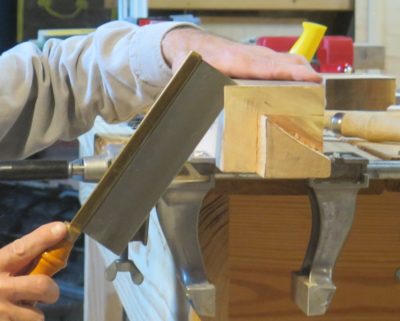
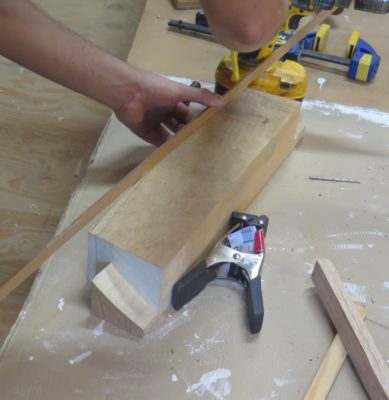
The royal pain is encountered when cutting and fitting the rear seat rail, an exercise that can take the better part of a day. I am convinced Gragg found a simple way to do this, perhaps even an easy way, but I have not yet re-engineered it so thus far. I’ve built eight chairs and every one is a struggle at this point.
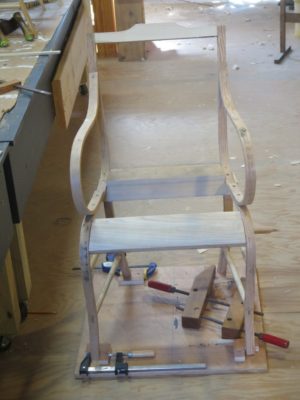
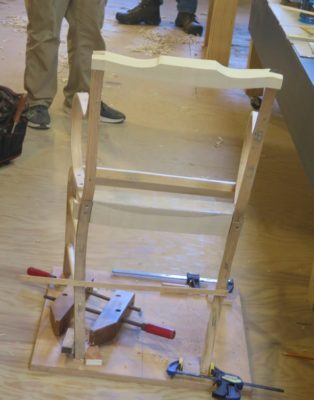
Finally the pieces get screwed together temporarily in order to move on to the next steps. Though it might feel like you are on the home stretch now, unfortunately you have just barely arrived at the halfway point in the construction process.
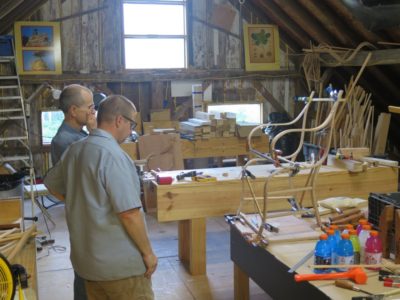
Early on Day 2 everyone had their side units assembled and thus began one of the more frustrating parts — getting the baby up on its feet. As I often say about Gragg chairs, you are not so much constructing a chair as you are assembling curvilinear sculpture in three-dimensional space.
To assist in the process I had constructed for each student an assembly jig including four stirrups indicating the location of the four feet. Combined with a few diagonal struts held in place by spring clamps, the correct posture was assured with the use of a bevel gauge to make sure each side was canting in the proper direction at the correct inclination. Now it was time to start fabricating and fitting the cross-chair elements, the front seat rail, the rear seat rail, and the crest rail. It sounds so simple but when you start fitting structural elements to curved and tapered components it suddenly is much less simple.
I learned two important items today to add to the “To Do” list in case I ever host this workshop again: 1) make a story stick for each student so they do not have to spend so much time measuring and remeasuring, and 2) have a fully dis-assemble-able chair so that it is quicker for me to explain how the parts fit together. I am working on that project right now. Perhaps a third thing is the hindrance of always working alone, repeatedly I would find myself forgetting to say out loud parts of the conversations going on inside my had, conversations that actually yield useful information about the “whys” and “hows ” of doing things.
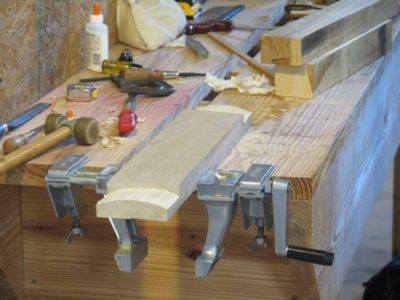
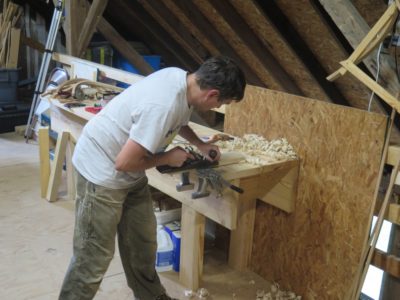
The easiest of the cross-chair structural elements is the front seat rail, so that is where I had the students begin. I had found that using a Zyliss vise is most beneficial to the Gragg chair building process so I made sure each workbench was outfitted with one. By the end of the class each student was a big fan of the tool.
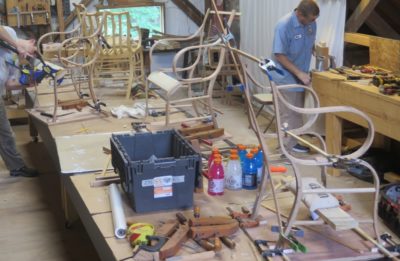
Near the end of the day it was a thrill to see the inventory of chair forms emerging on the assembly table.
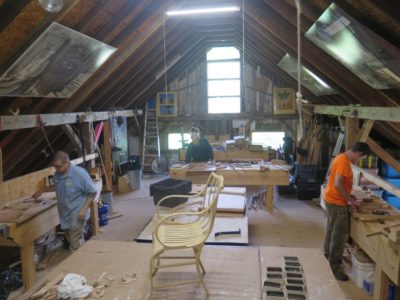
Bright-eyed and bushy tailed everyone hit the ground running Monday morning, assembling the two side units that are the starting point for the chairs. I made an assembly jig for each person to use as I do not know how to actually build a functioning and symmetrical chair any other way. Although our records of Gragg’s working methods are scarce, I would pretty much bet the house that he built his chars in a similar manner.
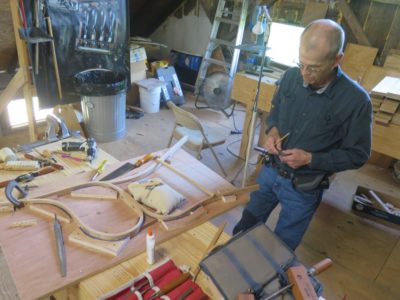
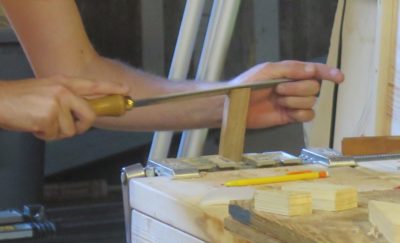
The first steps in assembling the chair out of its multitude of parts were fitting the serpentine, curved arm, and rear leg together, requiring only some trimming with a saw and a rasp, and screwing the parts together.
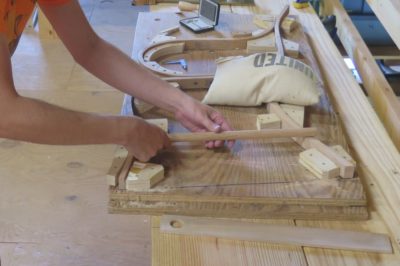
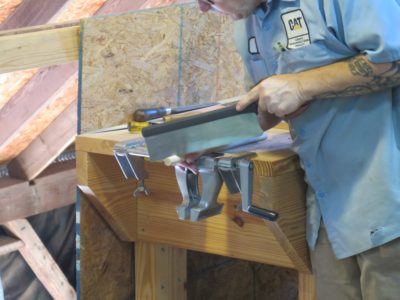
After that comes the first of many fussy stages, although not to the points of exasperation that were awaiting everyone in the days to come. This one involved laying out and cutting the stiletto tenons and their companion mortises for the side rungs. It was one of my improvements over Gragg’s original techniques as this was a much stronger and more robust joint than his full-sized drilled hole through the legs, many/most of which have fractured over the centuries.

Just to make sure it remains that way the joint is glued and pinned with a small brad, a construct I have found to perform superbly.
One final but not insignificant issue for the day and week was the heat. When I first contemplated this event eighteen months ago I thought the final full week of August would be a nice fit. Normally here in the mountains the last week of August is more likely to be the first week of autumn with chilly nights and mild days rather than the last week of summer. This was a central consideration given that the only place big enough for the workshop was the fourth floor, immediately underneath the asphalt-paneled roof. We’ve even had frost this week in years past, but not this time. It was the hottest full week I’ve seen here in twenty years. I kept as much air moving through the space as I could but it was just barely tolerable at times. Two participants preferred warm/hot weather, but for us Minnesota boys it was on the edge.
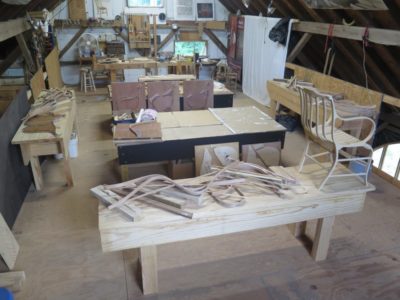
With the three students in-house by Sunday evening of last week, we began with a quick tour of the attic space we would be using for the chair building; it was the only space large enough for the four of us to be building four chairs simultaneously. We were delighting in the acquaintance-making yet tempered with the knowledge that the fourth student, one of my earliest and most ardent Gragg enthusiasts, had died suddenly and unexpectedly last month while I was preparing for the workshop. His memory was never far from my mind through the week.
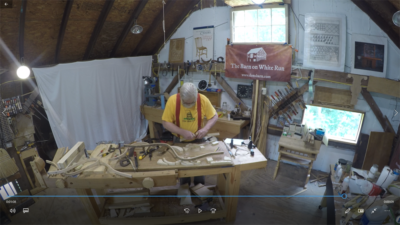
We then descended to my second floor studio where I treated them to the uninterrupted (except for my commentary) hour-long time lapse video of my “40-hour Challenge,” allowing them to see the entire process from beginning to end. With that, we were ready to hit the ground running Monday morning.
































































Recent Comments